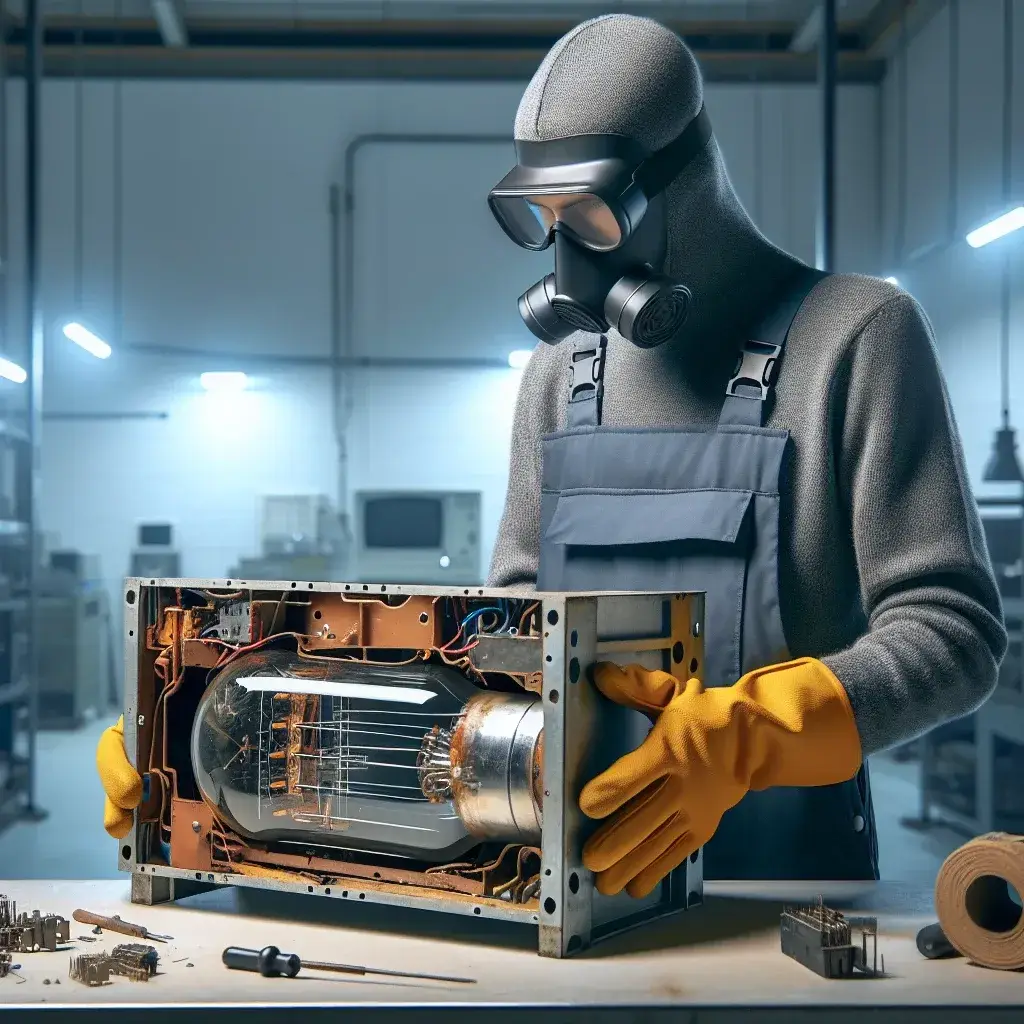Understanding the Risks of Broken CRTs
Cathode Ray Tubes (CRTs) were once the backbone of televisions and computer monitors. However, with the advent of flat-panel displays, CRTs are now mostly obsolete. A broken CRT can pose hazards due to the materials inside, making it important to handle and dispose of them safely.
Key Risks Associated with Broken CRTs
| Risk | Description |
|---|---|
| Lead Exposure | CRTs contain significant amounts of lead, which can be harmful if inhaled or ingested. |
| Phosphor Coating | The screen is coated with phosphor, which can be hazardous when damaged. |
| Glass Shards | Broken CRTs produce sharp glass shards that can cause injuries. |
| Vacuum Implosion | The CRT is under vacuum, and if broken, it can implode, scattering glass and toxic substances. |
Protective Measures Before Handling Broken CRTs
Before attempting to handle or dispose of a broken CRT, ensure you are well-prepared and protected. Here are some essential protective measures:
- Wear Protective Gear: Use safety goggles, thick gloves, and long-sleeved clothing to protect yourself from glass shards and toxic materials.
- Ventilation: Work in a well-ventilated area to avoid inhaling any harmful substances.
- Containment: Place the broken CRT in a sturdy box or container to prevent further breakage and spread of contaminants.
Step-by-Step Guide to Handling Broken CRTs
Secure the Area
Ensure the area where the CRT broke is secure and free from unauthorized access. This step is important to prevent accidental injuries and contamination.
Cleanup and Containment
- Collect Glass Shards: Carefully collect all visible glass shards using a broom and dustpan.
- Clean the Surface: Use a damp cloth to wipe down the area to pick up small glass particles and residual phosphor dust.
- Double Bagging: Place the broken CRT and collected materials in a sealable plastic bag. For extra safety, use double bagging to prevent leaks.
Transportation to Disposal Site
Transport the contained CRT to a designated disposal site, such as an e-waste recycling center. Do not dispose of CRTs in regular trash as they contain hazardous materials that can be environmentally damaging.
Environmental Considerations
Proper disposal of broken CRTs is not just about safety; it’s also about environmental responsibility. Here are some key environmental considerations:
Recycling and Reuse
Many components of CRTs can be recycled. Lead, glass, and certain metals can be extracted and repurposed, reducing the environmental footprint.
Local Regulations
Be aware of local regulations regarding electronic waste (e-waste) disposal. Some regions have specific guidelines and facilities for handling hazardous materials.
Conclusion
Handling a broken CRT requires careful attention to safety and environmental regulations. Following the outlined steps and protective measures ensures that you mitigate the risks associated with CRTs and contribute to responsible disposal practices. Always use designated e-waste disposal centers to handle such items correctly.

